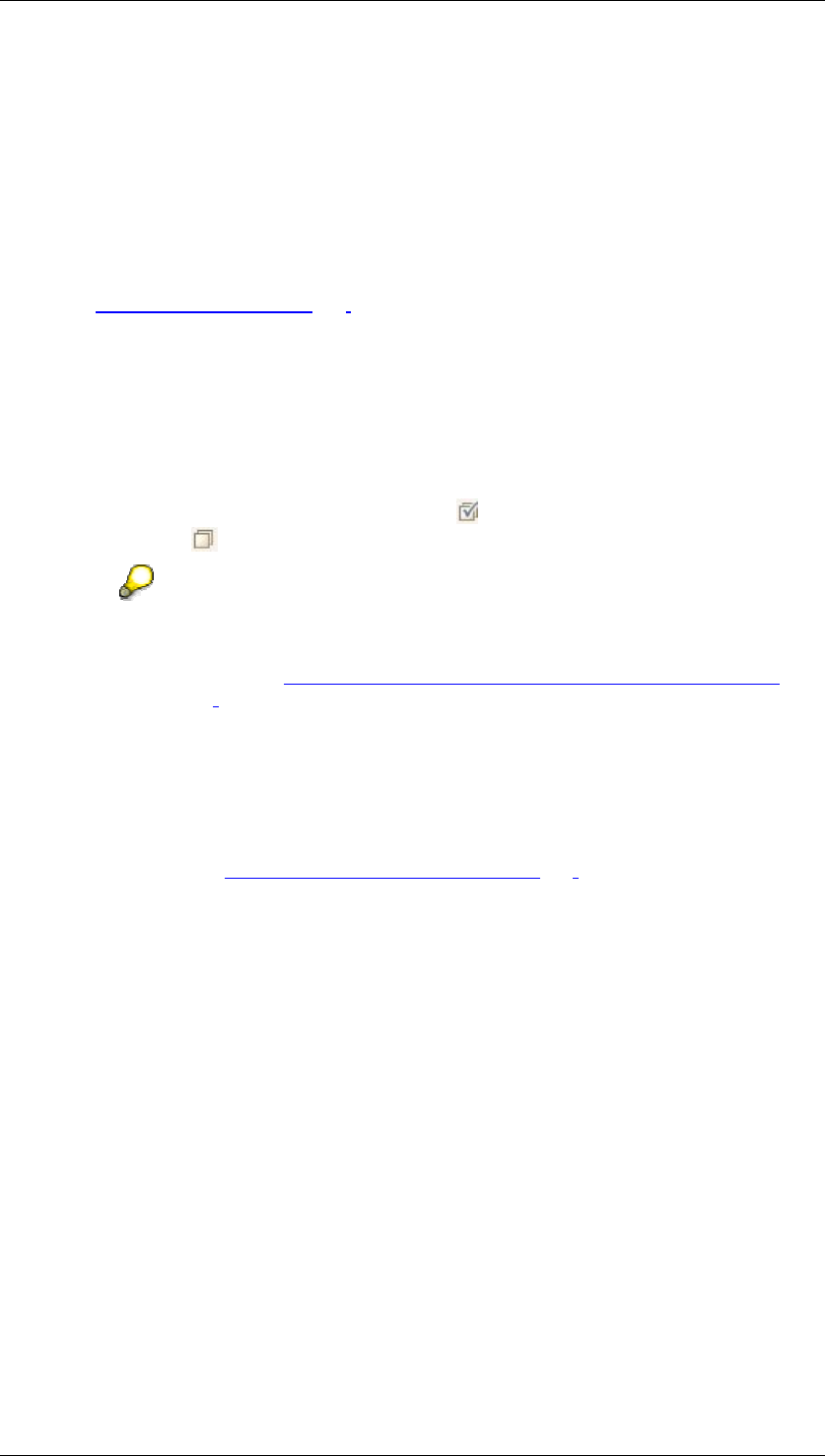
SAP Online Help 07.09.2004
SAP NetWeaver Visual Composer: User Guide 142
Procedure
...
1. From the data service, drag out from the output port that defines the data you want to
display in the UI component.
2. From the context menu, choose the UI component in which to display the data. Note
that the context menu displays only the most relevant options for the specific type of
output port. For example, if the output is a single record, the table view, which enables
the display of multiple records, will not be shown in the context menu, although you can
drag it from the Elements task panel.
The context menu may also display operators. For instructions about adding operators,
see Adding Operators [Page
145].
All of the output fields of the data service are automatically channeled to the input port
of the connected UI component. However, by default, none of the fields are selected for
display in the UI component, as shown in the Fields task panel, when you click the
newly-added output view.
3. Define the data flow: Select the fields to be displayed by clicking in the left
(eyeglasses) column. A check mark indicates each field selected for display in the
iView. To remove the check mark (so as not to display the field), click a second time in
the field. To select all fields, you can click the
button below the list; to deselect all
fields, click the
button.
Notes
• Your output from the data service may be defined as multiple forms,
connected through data binding. For full details about defining this type of
output, see Performing Data Binding Between UI Components [Page
147].
• You may create a virtual field in the output of the data service so that a
field in the connected output form will display a value computed
according to value(s) of other fields in the output. To do so, right-click the
relevant output port of the data service and choose Define Fields in the
context menu. In the Fields list at the right, click Add and create the field
you need, using the Expressions Editor to create the dynamic function
(see Using the Expressions Editor [Page
152]).
Example
The following is an example of a basic iView that includes two data services and their
connected UI components:
